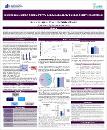ENDOTHELIAL NITRIC OXIDE ACTIVITY & BIOAVAILABILITY DURING OBESITY CONDITIONS
الملخص
Obesity has been recognized as a pandemic and linked with several metabolic dysfunctions. One of the hallmarks in the onset of obesity is the development of hypertension coupled with endothelial dysfunction. (ED) A fundamental feature of ED is the reduced bioavailability of the key vasodilator, nitric oxide (NO), which has important vasoactive functions. Endothelial nitric oxide is significantly produced by the isoform endothelial nitric oxide synthase (eNOS) in the vascular wall. NO production is modulated by both physiological and pathophysiological environment. Several recent studies have reported the correlation of obesity with NO bioavailability and the endogenous inhibitor of eNOS, asymmetric dimethyl arginine (ADMA). This research aims to define the mechanisms that contribute to controlling eNOS activity and NO bioavailability during obesity conditions. In this study, eight week-old male Sprague-Dawley rats were exposed to cafeteria diet for 16 weeks. Our findings show that body weight increased gradually with 44% of the CAF-fed group becoming obese (CAF-OB) and the remaining 56% becoming resistant to body weight gain (CAF-WR). Levels of plasma ADMA increased and serum nitrite concentrations were reduced in the CAF-OB group while the CAF-WR group had a decrease in plasma ADMA levels and an increase in serum nitrite concentrations. This reflects the interaction of ADMA as an endogenous inhibitor on the bioavailability of NO. In conclusion, CAF diet induces obesogenic effects leading to endothelial dysfunction in both weight gain and weight gain resistant groups.
DOI/handle
http://hdl.handle.net/10576/5494المجموعات
- العلوم البيولوجية والبيئية [920 items ]
- الأبحاث [108 items ]


